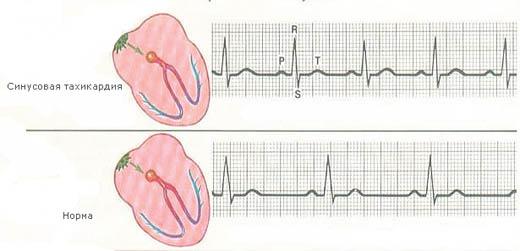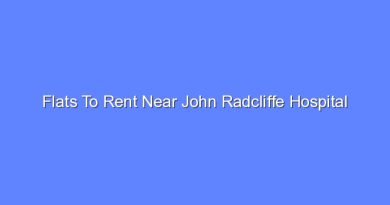Increased heartbeat – causes and first aid for tachycardia
 “And it beats so hard that it seems as if it’s about to jump out” – this is how people who are faced with symptoms of tachycardia usually explain their condition. In addition, there is difficulty in breathing, a “lump in the throat” appears, sweats, and darkens the eyes.
“And it beats so hard that it seems as if it’s about to jump out” – this is how people who are faced with symptoms of tachycardia usually explain their condition. In addition, there is difficulty in breathing, a “lump in the throat” appears, sweats, and darkens the eyes.
Where does tachycardia come from, and what to do if it takes you by surprise?
The content of the article:
Causes of frequent and strong heartbeats – what causes tachycardia?
Heart rate is a permanent process of contractions of the main organ in the human body. And the slightest malfunction of the heart is always a signal for examination.
The heart rate in a healthy person is usually 60-80 beats per minute… With a sharp increase in this frequency up to 90 impacts and more talk about tachycardia.
Such attacks tend to start unexpectedly – and just as unexpectedly end, and the duration of the attack can reach from 3-4 seconds to several days. The more emotional a person is, the higher the risk for him to meet with tachycardia.
However, the reasons for this symptom (namely the symptom, because tachycardia is by no means not a disease, and a sign of any disorder in the body) is a lot.

Also important distinguish tachycardia from the body’s natural reaction to physical activity or an attack of excitement, fear. Various factors can affect your heart rate …
For example, heart disease:
- Myocarditis (accompanying symptoms: pain, weakness, subfebrile condition).
- Heart disease (approx. – congenital or acquired defect).
- Arterial hypertension (in this case, the pressure rises from 140/90 and above).
- Myocardial dystrophy (in case of disturbed nutrition of the heart / muscle).
- Ischemic disease (approx. – manifested by a heart attack or angina pectoris).
- Anomaly of the development of the heart.
- Cardiomyopathy (approx. – deformation of the heart / muscle).
- Arrhythmia.
And also when …
- Climax.
- Various abnormalities in the thyroid gland.
- Tumors.
- Decrease / increase in pressure.
- Anemia.
- With purulent infections.
- With ARVI, flu.
- Loss of blood.
- VSD.
- Allergies.
It is worth noting other factors that can cause an attack of tachycardia:
- Mental / nervous disorders, stress, fear, etc.
- Lack of physical / exertion, sedentary work.
- Insomnia.
- Taking certain medications. For example, antidepressants. Or too long (chaotic) medication.
- Taking drugs or alcohol.
- Abuse of various caffeinated beverages.
- Overweight or old age.
- Magnesium deficiency.
- Chocolate abuse.
There are many reasons. And there are more of them than in the above list. The heart can react to any change or disorder in the body.
How to determine if it is worth worrying?
The only option – see a doctor…
Especially if this is not the first attack of tachycardia, and it is accompanied by the following symptoms:
- In the eyes darkens and dizzy.
- Weakness and shortness of breath appear.
- Chest pains are felt.
- Sweating, shortness of breath.
- Tingling in the fingers.
- Panic.
- Etc.
Types of tachycardia – is the increased heartbeat chronic?
During the examination, a specialist, before making a diagnosis, will find out what kind of tachycardia is observed in the patient.
She may be…
- Chronic. In this case, the symptoms are permanent or recur at regular intervals.
- Paroxysmal. This type of tachycardia is usually a sign of arrhythmia.
Arrhythmia, in turn, can be of the following types:
- Sinus. Usually, the patient independently determines the beginning and end of the attack. It is treated by elimination of influencing factors and lifestyle changes.
- Paroxysmal. It is confirmed during the seizure by electrocardiography. The focus of excitation, as a rule, is located in one of the parts of the cardiac system – the atrium or ventricle.

Why is heart palpitations dangerous – all the risks and consequences
It is naive to believe that tachycardia is just a temporary inconvenience. All the more so when seizures recur.
The risks and complications of tachycardia should be kept in mind.
For instance…
- Heart failure (in the absence of the ability to transport the required amount of blood by the heart).
- Pulmonary edema.
- Heart attack, stroke.
- Cardiac arrest, sudden death.
- Fainting. What to do in case of fainting – first aid
- Convulsions.
- Blood clots in the lungs / arteries.
The most dangerous thing is when an attack “catches up” a person suddenly and where no one can come to the rescue.
For example, driving on the road, while swimming, returning home from work, etc.
Therefore, even with minimal suspicions of tachycardia, there is no time to waste!
Timely expert advice can save lives!

First aid for sudden heart palpitations
In order to prevent complications after an attack of tachycardia, it is important to provide first aid correctly before the arrival of the doctor and to minimize the risk of damage to the weak parts of the myocardium and subsequent heart attack.
The first thing you should do is call an ambulance.
Then you need …
- Lay a person with a seizure so that the body is lower than the head.
- Open all windows unbuttoned. The patient needs oxygen.
- Apply a damp, cool cloth to your forehead (or wash with ice water).
- Free a person from clothing that interferes with proper breathing. That is, take off the excess, unbutton the collar of the shirt, etc.
- Find a sedative in your medicine cabinet to help relieve symptoms.
- Do breathing exercises. 1st: take a deep breath, hold the breath for 2-5 seconds and exhale sharply. 2nd: deep breaths and shallow breaths with tongue out for 15 seconds. 3rd: cough as hard as possible or induce vomiting. 4th: inhale for 6-7 seconds, exhale for 8-9 seconds. within 3 minutes.
- Brew tea from lemon balm or chamomile (green or regular tea, as well as coffee is absolutely impossible!).
- Massage will also help. 1: gently and gently press for 4-5 minutes on the right side of the neck – on the area where the carotid artery is located. Massage is unacceptable in old age (may cause a stroke). 2: put your fingers on your closed eyelids and massage the eyeballs for 3-5 minutes in a circular motion.
It is extremely important not to lose consciousness during an attack! Therefore, use all means to lower your heart / rhythm rate. Including drinking cold water in small sips, acupressure, and even pinching the eyes to the bridge of the nose (the method was also noted as one of the most effective).
Rapid Palpitations Diagnostic Program
So is it tachycardia or something else? How will the doctor determine whether it is worth worrying and being treated, or is it possible to relax and forget about the attack?
Tachycardia (or lack thereof) will be diagnosed using the following procedures and methods:
- Of course, an electrocardiogram heart to determine the frequency / rhythm of heart contractions.
- Further ECG monitoring “Holter” to study all changes in the heart during the day, both during exercise and at rest.
- Electrophysiological research.
- Ultrasound, MRI and Echocardiography – they are needed to identify pathologies.
- Bicycle ergometry is sometimes prescribed. This method involves examining a patient using equipment while exercising on a stationary bike.
- Also, tests, thyroid examination, blood pressure measurements will be prescribed and other procedures.
What can the doctor ask (be prepared)?
- How long does the attack last (you can time it if the attacks are repeated).
- How often, at what time and after which seizures usually occur.
- What is the pulse during an attack.
- What the patient ate, drank, or took before the attack.
Even if the attack “covered” you for the first time, remember: this is an extremely serious signal from your body. That is, it is time not only to be examined and follow the doctor’s prescriptions, but also to change the way of life!
And, of course, it is necessary to organize proper nutrition for health.
The Colady.ru website warns: the information is provided for informational purposes only, and is not a medical recommendation. Do not self-medicate under any circumstances! If you have any health problems, consult your doctor!
What to give a friend?
Gift Certificate! You can give it to your loved one or use it yourself.
And we also give away a certificate for 3000 rubles every month. among new email subscribers. Subscribe!
Select a certificate in the store
Visit Bologny for more useful and informative articles!





